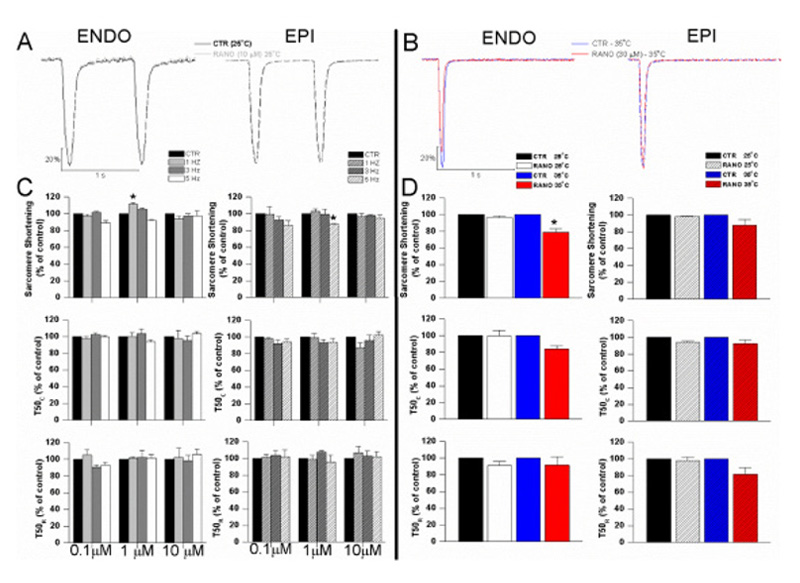Volume 114, Nº 4, April 2020
DOI: https://doi.org/10.36660/abc.20190220
BRIEF COMMUNICATION
Inotropic and Antiarrhythmic Transmural Actions of Ranolazine in a Cellular Model of Type 3 Long QT Syndrome
Victor Martins Miranda
Samuel Santos Beserra
Danilo Roman-Campos

Figure 1 – Inotropic effect of ranolazine (RANO) on sarcomere shortening of ENDO and EPI cardiomyocytes. Representative sarcomere shortening recordings before (black (25ºC) and blue (35ºC)) and after (light gray (25ºC) and red (35ºC)) exposure of ENDO (left) and EPI (right) cardiomyocyte to RANO ((A) 10 and (B) 30 μM). Inotropic effect of 0.1, 1, and 10 μM RANO (C) and 30 μM (D) on sarcomere shortening (upper bars); Normalized time to 50% sarcomere contraction (T50C) (middle bars)) and; normalized time to 50% of sarcomere relaxation (T50R) (bottom bars) Hatched bars represent EPI cells (n = 3–6 cells/concentration). *p < 0.05 comparing before and after RANO exposure.
Keywords: Arrhythmias, Type 3 Long QT Syndrome, ATX-II, Late Sodium current, Ranolazine, Contraction.















